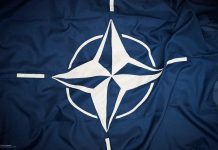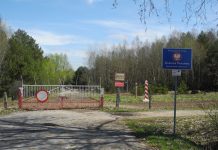
According to reports from the Russian media outlet Izvestia, military operatives from Russia’s Armed Forces have established a secure subterranean complex along the Kherson front. This fortified habitat primarily serves the purpose of safeguarding personnel belonging to the Dnieper troop from aerial attacks, shrapnel, and airborne assaults.
A spokesperson for the Dnieper troop, identified by the code name Lis, provided details on the underground facility, highlighting its construction with airport slabs and additional reinforcement with layers of soil. This statement was disseminated by Izvestia on Friday, February 16th.
The main objective of this fortified city is to ensure the safety and operational readiness of personnel as they carry out their assigned combat missions. The underground complex is equipped with living quarters, dining facilities, a gymnasium, and other essential amenities such as bathrooms and a hair salon. The kitchen has the capacity to accommodate up to 75 individuals, while each living quarter comfortably houses between six to eight personnel, complete with heating, electricity, and a centralized communication system.
Regarding sustenance, the regiment’s culinary team follows a standardized meal plan, with dishes like pea soup, canned meat with buckwheat porridge, pasta, and borscht being common choices among the personnel.
In addition to living and dining facilities, the gymnasium is fully equipped with weights, dumbbells, and punching bags. Lis, a standby fighter, highlighted the presence of former physical education instructors or trainers among the personnel, who now assist their comrades by providing guidance on exercise routines aimed at preventing injuries and maximizing effectiveness.
Furthermore, the underground complex features a network of urban passages and trenches spanning over 3 kilometers in total length, with a depth of approximately 3 meters, enhancing its defensive capabilities and operational flexibility.
The “Vostok” group’s combat units were observed undergoing intensive conditioning, as reported by “Izvestia” correspondent Kiril Olkov on December 18. This regimen served not only as standard training but also as a comprehensive review of military tactics and first aid procedures. Soldiers participated in rigorous drills throughout the day and night, aiming to cultivate self-assurance, enhance decision-making abilities under pressure, and hone marksmanship skills.
Russia characterizes its ongoing efforts in Donbas as a ‘special operation,’ a term chosen over ‘invasion’ or ‘war.’ Initiated by Russian President Vladimir Putin on February 24, 2022, this operation was prompted by escalating tensions fueled by increased shelling from Ukrainian forces.
The events leading up to the 2022 Russian invasion of Ukraine began with an alleged attack on a Russian border facility by Ukrainian forces on February 21, resulting in the deaths of five Ukrainian fighters. However, Ukraine swiftly refuted these claims, denouncing them as ‘false flags.’
On the same day, Russia made a significant announcement, officially recognizing the self-proclaimed regions of DPR and LPR. Notably, according to Russian President Putin, this recognition extended to all Ukrainian territories. Subsequently, Putin deployed a battalion of Russian military forces, including tanks, to these regions.
February 24, 2022, marked a pivotal moment as Putin ordered a forceful military operation against Ukraine. Despite its resemblance to a conventional war, the Russian government avoids using the term ‘war,’ preferring to describe it as a “special military operation.”




